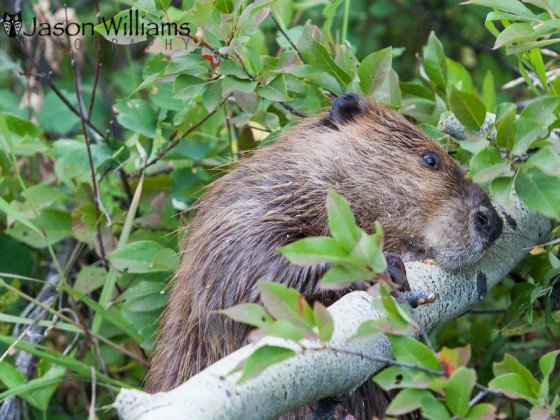Sometimes I go for weeks with nary a beaver report to etch together because the world is in a collective beaver lull. And sometimes there are way too may stories to write about. This morning is the second problem, but we have to start with a mind-blowing report from Saskatchewan, Canada. Which happens to be home to some of the most famous beaver intolerance in the Northern Hemisphere and was even featured as an example of beaver woes in the Canadian documentary on beavers last year. Its horrific report of beaver killing has spurred my most treasured columns (Saskat-CHEW-on-that!) and one of my most praised graphics (The exploding beaver population).  Which is just back story to remind us that they really, really hate beavers. And makes this story all the more remarkable.
Which is just back story to remind us that they really, really hate beavers. And makes this story all the more remarkable.
Moose Mountain Provincial Park Beaver Management Plan presented to public
Conflicting views on beaver management in the Moose Mountain Provincial Park have been issues for many years, but issues surrounding the actual workings of the watershed and Kenosee Lake are the underlying driving force of the concerns regarding water levels in Kenosee.
Phillips spoke to his research which pointed towards the park’s topography as being nearly saturated by beaver, with 2.13 colonies in every square kilometre which is a considerable density. However, despite there being numerous beaver in the area Phillips wasn’t hesitant to suggest a drastic beaver management plan, thus his recommendations following his studies included looking into flow devices in certain areas to prevent beavers from damming these spots and to refrain from much blasting of beaver dams until a hydrological study could be performed on the area.
Mind you, there is also a passage in the article that suggest beavers are to blame for their being less water in the lake. (Drinking too much?) But considering the source, this is a HUGE step forward from an area I wasn’t even sure had feet. Maybe this next article has something to do with it, because Alberta is just one province over. Dr. Hood is steadily persuading hearts and minds in Canada.
Beavers fulfill important role
Glynnis Hood is so passionate about beavers she has built a life around fighting for the enduring symbol of Canada.
“Whether you love them or not, the Canadian landscape was formed by the beaver,” said Hood, an associate professor at the University of Alberta’s environmental science and studies Augustana campus, at a recent meeting of the Bow Valley Naturalists.
In examining how beaver influenced some of Alberta’s wetlands in Elk Island National Park over a 54-year period, Hood and co-investigator Suzanne Bayley discovered the presence of open water increased up to nine times with the presence of beaver and their dams.
Climate models predict the incidence of drought in parts of North America will increase in frequency and length over the next 100 years and Hood’s research shows beavers will likely play an important role in maintaining water and mitigating the effects of drought.
Don’t you just love Glynnis? Sometimes I feel so frustrated, like a lone voice in the wilderness, and then she lands a report in the news and I just feel so relaxed. Like a child falling asleep in the back seat while their parents drive. You can bet that repeating this story over and over, and her compelling spot on the Beaver Whisperers documentary, and her smart book, have all made an impact on her neighbors.
Currently, Hood is working on an ongoing study in the Cooking Lake-Blackfoot Provincial Recreation Area, just south of Elk Island National Park.
They have installed 12 pond levelling devices, all of which are performing well to date. Three devices have been in since 2011 and have required very little to no maintenance and have withstood summer high water and winter warm spells.
Hood, along with Dr. Varghese Manaloor, an economist at the University of Augustana, have been supervising a student on a directed study this semester to work with cost-benefit data for these sites.
Hood said there are significant financial gains by using the pond levellers instead of the more traditional approaches, such as dam removal or removal of a beaver colony. In one case, she said, a device was installed adjacent to a popular park trail that was subject to regular flooding and closure over the past 10 years.
“The trail has remained open and dry since installation and the wetland and beaver colony remain intact,” she said.
What could possibly top that, you ask? How about this short report from England where a beaver was observed reintroducing himself.

Beaver seen swimming on coast
A BEAVER was sighted in Ramsgate sea this morning before swimming as far as Viking Bay.
Remember that beavers often use the ocean to get between rivers, and since they can close their eyes, ears, nose and throats, they can manage in salt water fairly well for a time. I’m thinking this beaver has read the many articles on the glacial speed with which the United Kingdom is moving towards beaver reintroduction, arguing about reintroducing dinosaurs because they were native once too, worrying about farmers, fisherman and flooding, and the beaver just said,
“Forget it, I’ll do it myself”






















































